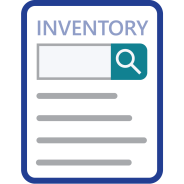
Choose from 5 options:
Most toothpastes are classed as cosmetics, while many oral hygiene products are classed as therapeutic goods.
These are used to care for the teeth and mouth and include:
In Australia, these products are regulated as either therapeutic goods or cosmetics, depending on:
The Therapeutic Goods Administration (TGA) is responsible for regulating toothpaste and oral hygiene products that are medicines or marketed as having therapeutic effects. Toothpaste and oral hygiene products are classed as ‘therapeutic’ goods if they:
Example 1: mouthwash with a label that says it stops gum disease is a therapeutic good because it claims to prevent a disease.
Example 2: toothpaste with a label that says it cures gingivitis is a therapeutic good because it claims to cure a disease.
However, certain toothpaste and oral hygiene products — including dentifrices, mouth washes and breath fresheners — are excluded from TGA regulation under the Therapeutic Goods (Excluded Goods) Determination 2018 and are classed as cosmetics.
We are responsible for regulating the ingredients in these products as long as they meet the following criteria:
Ingredients in non-medicated toothpaste and oral hygiene products are regulated as industrial chemicals in Australia. Therefore, you must register your business with us before you import or manufacture (‘introduce’) these types of products for commercial purposes.
Learn about registration and who must register
After registering with us, you must work out which of 5 AICIS introduction categories apply to each ingredient in your products. Start by gathering a list of all the ingredients in your products, then search for each one on the Australian Inventory of Industrial Chemicals (Inventory).
Read our guidance for step-by-step instructions
Does your product include a flavour or fragrance?
If you or your chemical supplier know that the chemical is not on the Inventory, you can introduce the flavour or fragrance as a ‘reported introduction: low-risk flavour or fragrance blend’, but only if your introduction meets the criteria for this category. If you use this pathway and you don't know the identity of the chemicals, you'll need to nominate a person that can provide information about the chemicals.
Ban on use of animal test data in cosmetics: If you're using tests on animals to work out your introduction category, make sure you understand the rules on using animal test data for categorising chemicals in cosmetics.
You must submit an annual declaration and keep certain records about your chemical introductions to confirm they comply with our laws. Record keeping obligations depend on which category applies to your introduction.
You must keep these records for 5 years, beginning immediately after the end of the registration year, even after you’ve stopped introducing your chemical.
Learn about your reporting and record-keeping obligations
If your introduction is for an end use in cosmetics or consumer goods, you must ensure that it complies with other government standards including those established by:
To report a problem about a toothpaste, please go to the Product Safety website of the Australian Competition and Consumer Commission (ACCC). For medicinal toothpaste issues, you can report this to the Therapeutic Goods Administration.
Q. What are the packaging and labelling requirements for toothpaste and oral hygiene products?
Consumer and cosmetic products must comply with Australian laws for labelling and product safety. However, we don't set or enforce labelling requirements for consumer and cosmetics in Australia and we don’t provide specific advice about this.
For more help on this topic, see labelling, SDS and packaging.
Q. I am making toothpaste that I want to take to a commercial level. I would like to add essential oils to provide freshness and flavour. Are you able to provide a list of approved essential oils and any other information I should know in relation to going commercial with such a product?
A. We don’t provide lists of approved product ingredients. However, once you’re sure your toothpaste will be a cosmetic product – not a therapeutic good – start by searching our Inventory for every ingredient that you plan to include in the product. If the ingredients are listed on the Inventory, you must ensure you can comply with any listed obligations or restrictions. If an ingredient is not listed on the Inventory, you must categorise it as an exempted, reported or assessed introduction.
You should also check the Poisons Standard to ensure the ingredients you plan to include in your toothpaste do not exceed the stated amount for this use.
Q. Are toothpastes for sensitive teeth classed as cosmetics?
No, toothpastes for sensitive teeth are classed as therapeutic goods because they make therapeutic claims and do not meet the requirements of the Therapeutic Goods (Excluded Goods) Determination 2018.
Q. What are the limits on using sodium fluoride, hydrogen peroxide and cetylpyridinium chloride in cosmetic mouthwash products under AICIS?
It’s important to note that a mouthwash must meet the requirements of the Therapeutic Goods (Excluded Goods) Determination 2018 to be classed as a cosmetic product in Australia .
If the ingredients in the mouthwash do not meet these requirements, then they are regulated by the TGA.
You should also check the Poisons Standard to ensure the ingredients you’ve mentioned do not exceed the stated amount for this use.
Q. Is there a list of toothpaste and oral hygiene products or brands?
In Australia, there is no single list of toothpaste and oral hygiene products or brands that you can view or download.
AICIS doesn't regulate products. We regulate the ingredients of toothpaste and oral hygiene products that aren't therapeutic. The Therapeutics Goods Administration (TGA) regulates all therapeutic products.
We have prepared guidance explaining the difference between cosmetic and therapeutic products.
Contact us to ask a question, request information, give feedback or make a complaint.